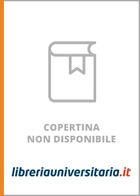
Development and evaluation of protective sheet metal die covers to improve tool life in hot forging
- Editore:
Verlagsgruppe Mainz
- EAN:
9783958863231
- ISBN:
395886323X
- Pagine:
- 132
- Formato:
- Paperback
- Lingua:
- Tedesco
Descrizione Development and evaluation of protective sheet metal die covers to improve tool life in hot forging
The economic success of a hot closed-die forging process is highly dependent on the tooling costs, which account for up to 17-50% of the total price of forged parts. Improving the service life of forging dies is the most efficient way to reduce tooling costs. Since the degradation of the properties of forging dies occurs mainly at their surface layer, the most commonly used current method for prolonging tool life is to modify the material properties of the die surface by a surface treatment or coating such as nitriding, PVD (Physical Vapor Deposition), CVD (Chemical Vapor Deposition), and duplex technology. These approaches can improve the hardness and thus the wear resistance of the die surface by producing protective material layers on it. However, these layers usually have a strong bond with the forging die, which impedes its removal after degradation. Therefore, the exchange of the whole forging die is necessary after the protective layer is worn away. As a result, the pace of production decreases, and total costs increase. In the search for a method that could reduce both tooling costs and repair time, a new concept, "protective sheet-metal die covers," was investigated. This concept proposes to develop an inexpensive and exchangeable sheet metal part for protecting forging dies from wear. The idea behind the proposed concept is to replace the die surface by a sheet metal part called a die cover. This cover protects the die from thermal and mechanical loads during forging cycles and can be easily exchanged after wearing out. Experimental studies of the die cover concept proved that the temperature of the die surface can be decreased by applying the die cover. However, these studies all faced the same problem: each die cover deformed and bonded with the billet after the first forging stroke. This work aims to evaluate the feasibility and protective effects of die covers and to develop the die cover concept into a feasible, effective, and cost-effective solution for prolonging the tool life of hot forging dies. The feasibility of the die cover concept was evaluated by identifying feasible cases. First, a simulation model was built based on the data gathered from the previous experiments to represent the deformation of die covers during forging. Numerical analysis indicated that the deformation of the die cover was a result of compressive forces produced by the movement of the contact regions. Friction conditions, geometrical features, and material selection were the main factors influencing the deformation of the die cover. Based on this analysis, another set of simulations were conducted to explore the influences of each factor individually. Results showed that the compressive stress within the die cover increased with the increase of the friction coefficients between the billet and the die cover, while it decreased with the increase of the friction coefficient between the die cover and the forging die. Therefore, in order to prevent the deformation of the die cover, it is better to achieve a friction condition with a small friction coefficient between billet and die cover and a large friction coefficient between die cover and forging die. Looking at the geometrical features, geometries with a greater face angle, shallower die depth, and less contact length between billet and die cover tended to result in less folding and are therefore more suitable for applying die covers. For the material selection of die covers, different types of material were analyzed according to the requirements of die cover material. Three of the discussed materials, DC04, HS6-5-2, and 22MnB5, were tested via experiments. The material 22MnB5 was proven to be the most promising material for die covers among the three evaluated materials. In the end, two cases were designed when considering all of the influences mentioned above. Experimental results validated the analysis of the effects of geometrical features and die cover materials. The service life of the die covers in these two cases reaches 3 forging cycles and 7 forging cycles, respectively. These two cases proved that the die cover could be applied in forging more than one forging cycle. However, the short service life of die cover was still the main limitation of the die cover concept.



